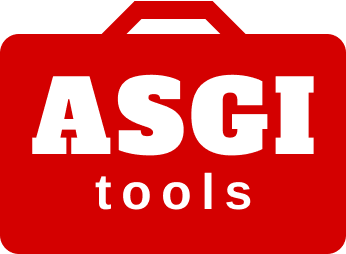
Are you looking for a lightweight and efficient way to build ASGI applications? Look no further than asgi-tools, a powerful ASGI Toolkit that empowers developers to create high-performance applications with ease. In this article, we will explore the key features and functionalities of asgi-tools, discuss how it caters to different async Python libraries, and showcase its versatility with real-world use cases.
Features and Functionalities
asgi-tools offers a wide range of features and functionalities that simplify the development of ASGI applications. Let’s take a closer look at some of its key components:
-
Request Parsing: asgi-tools provides a robust Request module that allows you to easily parse ASGI scopes, extract URL, headers, cookies, and even read data in various formats such as JSON and form-data. With this functionality, handling incoming requests becomes a breeze.
-
Response Handling: The Response module in asgi-tools enables you to send HTTP responses in different formats, including text, HTML, JSON, streaming, server-sent events (SSE), files, and even custom HTTP errors. This feature offers great flexibility in crafting rich and dynamic responses.
-
Websocket Support: With the ResponseWebsocket module, asgi-tools allows seamless integration with websockets. You can easily incorporate real-time communication capabilities into your ASGI applications, enhancing user experience and enabling interactive features.
-
Middleware Components: asgi-tools comes equipped with a variety of middleware modules that make common tasks easier to handle. For instance, the RequestMiddleware module helps parse ASGI scopes and insert parsed requests into the scope, while the ResponseMiddleware module converts responses into ASGI messages. Other middleware components, such as RouterMiddleware, LifespanMiddleware, and StaticFilesMiddleware, provide additional functionality for advanced application requirements.
-
Test Client: asgi-tools provides a TestClient module that supports websockets, making it effortless to test your ASGI applications and ensure their robustness. This feature simplifies the testing process, allowing you to identify and resolve issues quickly.
-
App Helper: Leveraging asgi-tools’ App module, you can streamline the development of your ASGI applications. The App module provides a simple foundation for building ASGI apps, enabling you to organize your code effectively and improve development speed.
Real-World Use Cases
asgi-tools is versatile and can be applied in various scenarios. Let’s explore some real-world use cases where asgi-tools shines:
-
API Development: asgi-tools is ideal for building APIs due to its efficient request parsing and response handling capabilities. You can easily create endpoints, handle authentication and authorization, and generate well-structured and standardized responses.
-
Real-Time Applications: The websocket support in asgi-tools makes it an excellent choice for developing real-time applications such as chat systems, collaborative tools, and live event notification systems. You can leverage websockets to enable instant communication and deliver real-time updates to users.
-
Microservices Architecture: asgi-tools’ lightweight nature and modular design make it a perfect fit for microservices architecture. You can create individual microservices using asgi-tools, each responsible for a specific functionality, and coordinate their communication seamlessly.
-
File Serving: With the StaticFilesMiddleware module, asgi-tools simplifies serving static files from URL prefixes. This feature is particularly useful for applications that require efficient delivery of static assets such as images, CSS, and JavaScript.
Getting Started with asgi-tools
To start using asgi-tools, make sure you have Python 3.8 or higher installed on your system. asgi-tools also requires an ASGI HTTP server to run, such as uvicorn, daphne, or hypercorn. Once you have met these requirements, you can install asgi-tools using pip with the following command:
shell
pip install asgi-tools
To help you get started quickly, let’s look at a simple example:
“`python
from asgi_tools import App
app = App()
@app.route(‘/’)
async def hello(request):
return “Hello World!”
“`
Save the code above as app.py and run it with uvicorn using the following command:
shell
uvicorn app:app
You should now have a fully functioning ASGI application that responds with “Hello World!” when accessed at the root URL.
Community and Contributions
asgi-tools is an open-source project with an active community that welcomes contributions. If you have any suggestions, bug reports, or feature requests, please use the project’s bug tracker on GitHub. You can find it here.
If you’d like to get involved in the development of asgi-tools, the project’s source code and development activities can be found on GitHub. You can contribute by submitting pull requests, adding new features, or fixing bugs. Visit the project repository to learn more.
Conclusion
asgi-tools is a powerful ASGI Toolkit that provides developers with the necessary tools to build high-performance ASGI applications quickly. With its rich features, versatile middleware components, and lightweight design, asgi-tools is the go-to choice for developers looking to harness the power of ASGI in their applications. Whether you’re building APIs, real-time applications, or microservices, asgi-tools has you covered. Give it a try and experience the ease and efficiency of building ASGI applications with asgi-tools.
Happy coding!
Author: Dr. Emily Techscribe
Disclaimer: This article is not affiliated with or endorsed by asgi-tools or its developer, klen.
Leave a Reply